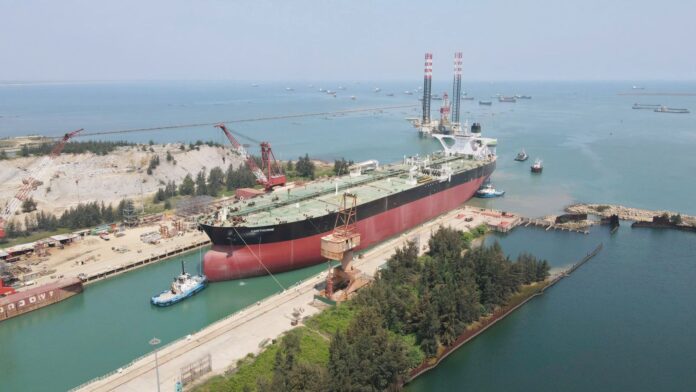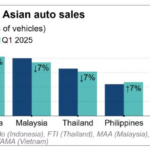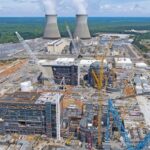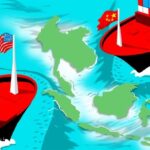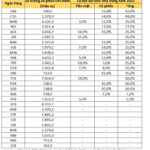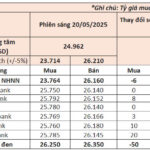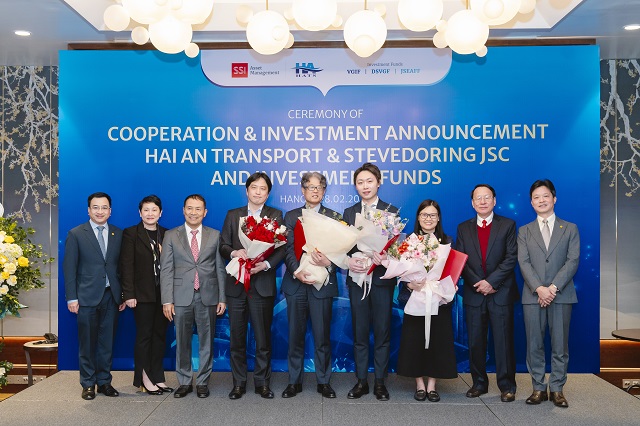Refurbishing One of the Largest Oil Tankers in Southeast Asia
In late 2024, PVSM (formerly known as Dung Quat Shipbuilding Industry Company – DQS), refurbished the MT Cawthorne, one of the largest oil tankers in Southeast Asia, into a floating storage and offloading unit (FSO).
At 333 meters long, the vessel stands almost three-quarters the height of Vietnam’s current tallest building, the 461.3-meter Landmark 81, when upright. With a deadweight tonnage of approximately 318,000 tons, it can hold the equivalent of 16,000 20-ton tankers. This makes it one of the largest oil tankers in the region.
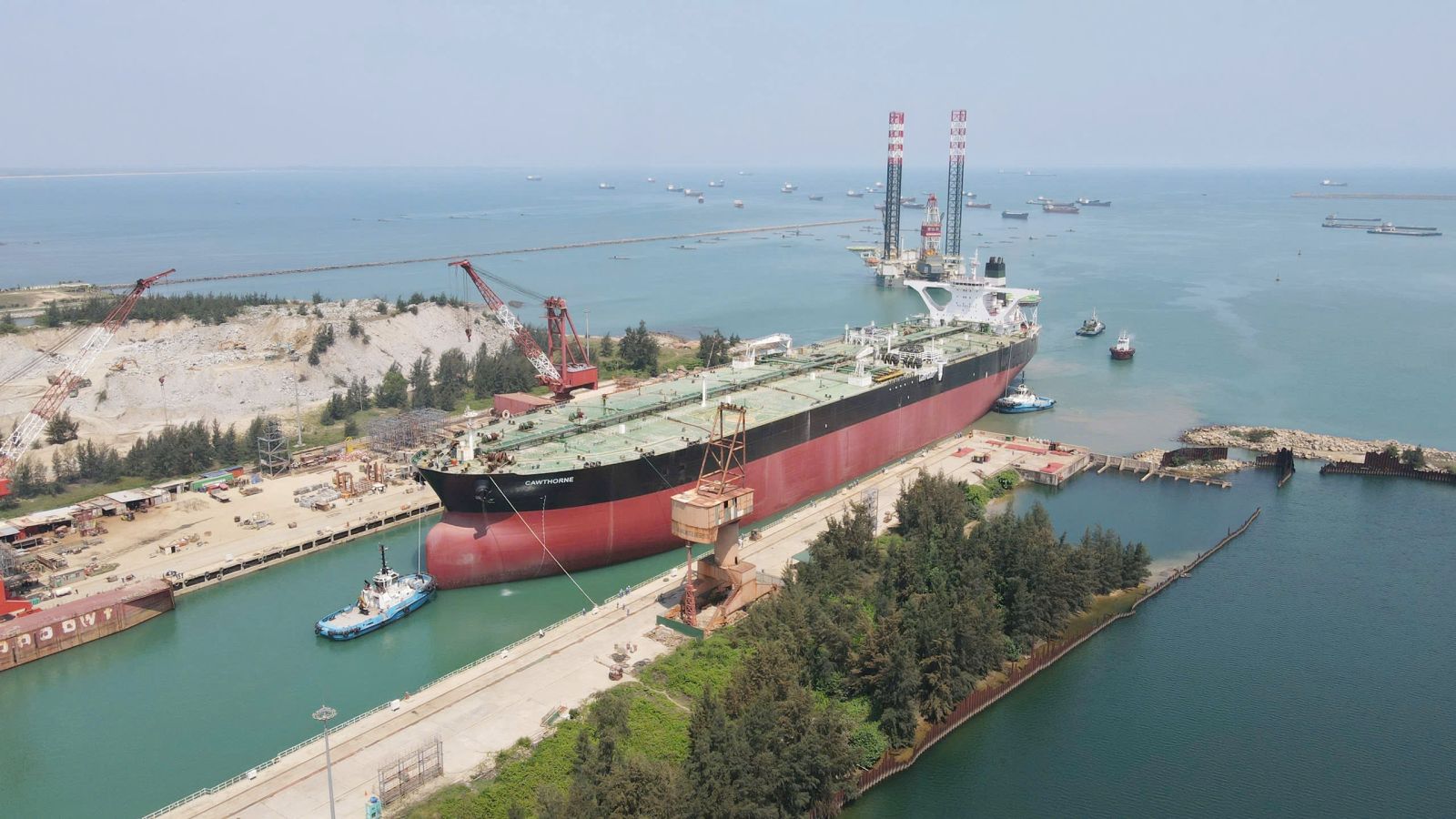
After over three months of work, on March 25, 2025, DQS completed and handed over the FSO MT Cawthorne to its foreign owner for operation.
The MT Cawthorne project was the second vessel refurbishment undertaken by the company. This project demanded far more advanced techniques and technology compared to regular ship repairs or new builds.
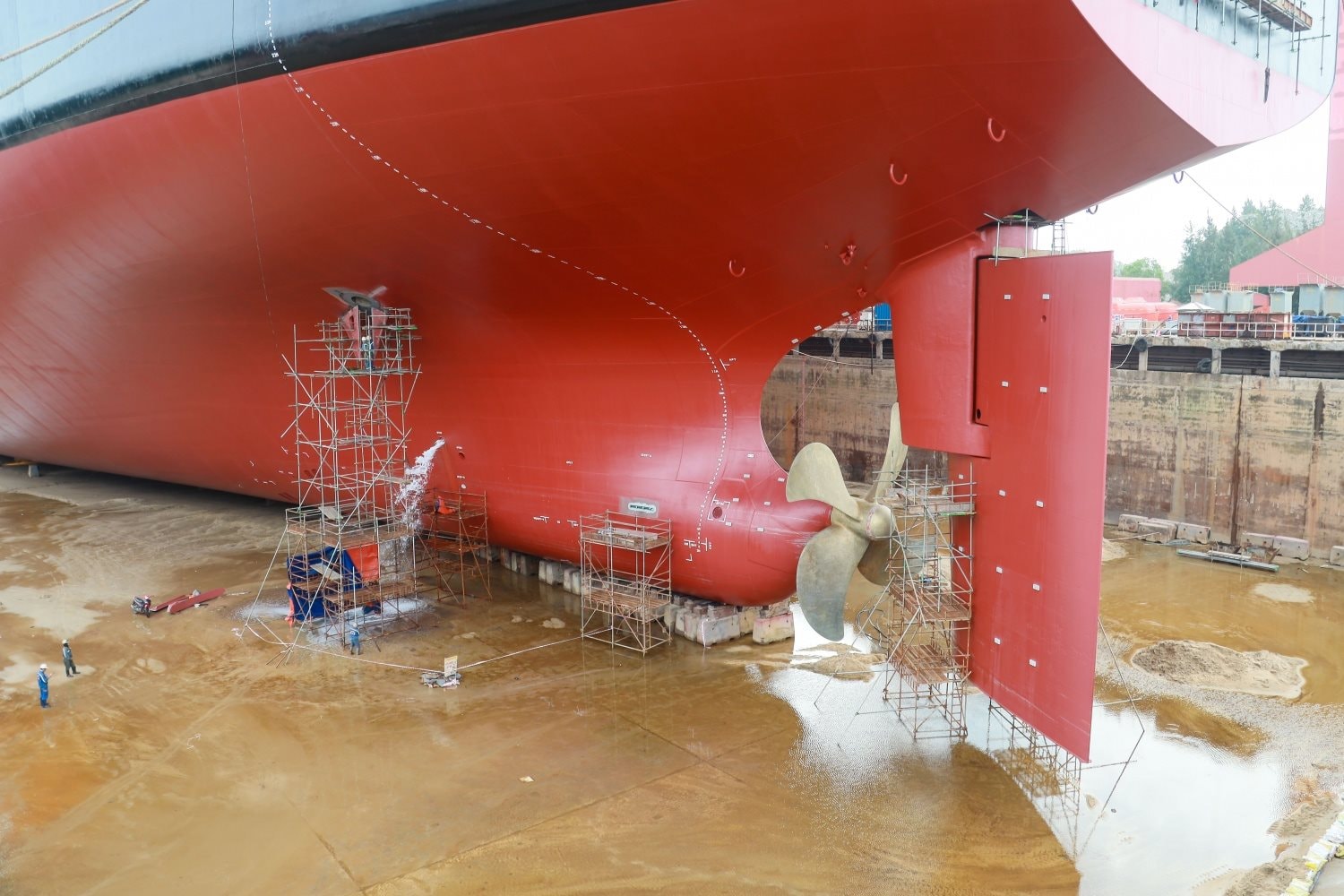
To tame this giant, PVSM overhauled and replaced all seawater cooling pipes, generator pipes, exhaust pipes, freshwater pipes, and compressed air pipes, totaling about 78 tons.
PVSM also maintained oil transport pipes, fire-fighting pipes, and sanitary sewer pipes, totaling approximately 2,300 meters in length.
Additionally, they replaced nearly 20 tons of iron in the cargo hold, serviced about 250 valves, and cleaned and coated over 94,241 square meters (equivalent to more than 13 standard football fields) to prevent corrosion.
Notably, PVSM fabricated, installed, and commissioned an oil import/export system on the vessel’s hull. The MT Cawthorne was also fitted with a helipad capable of accommodating aircraft weighing 9-12 tons.
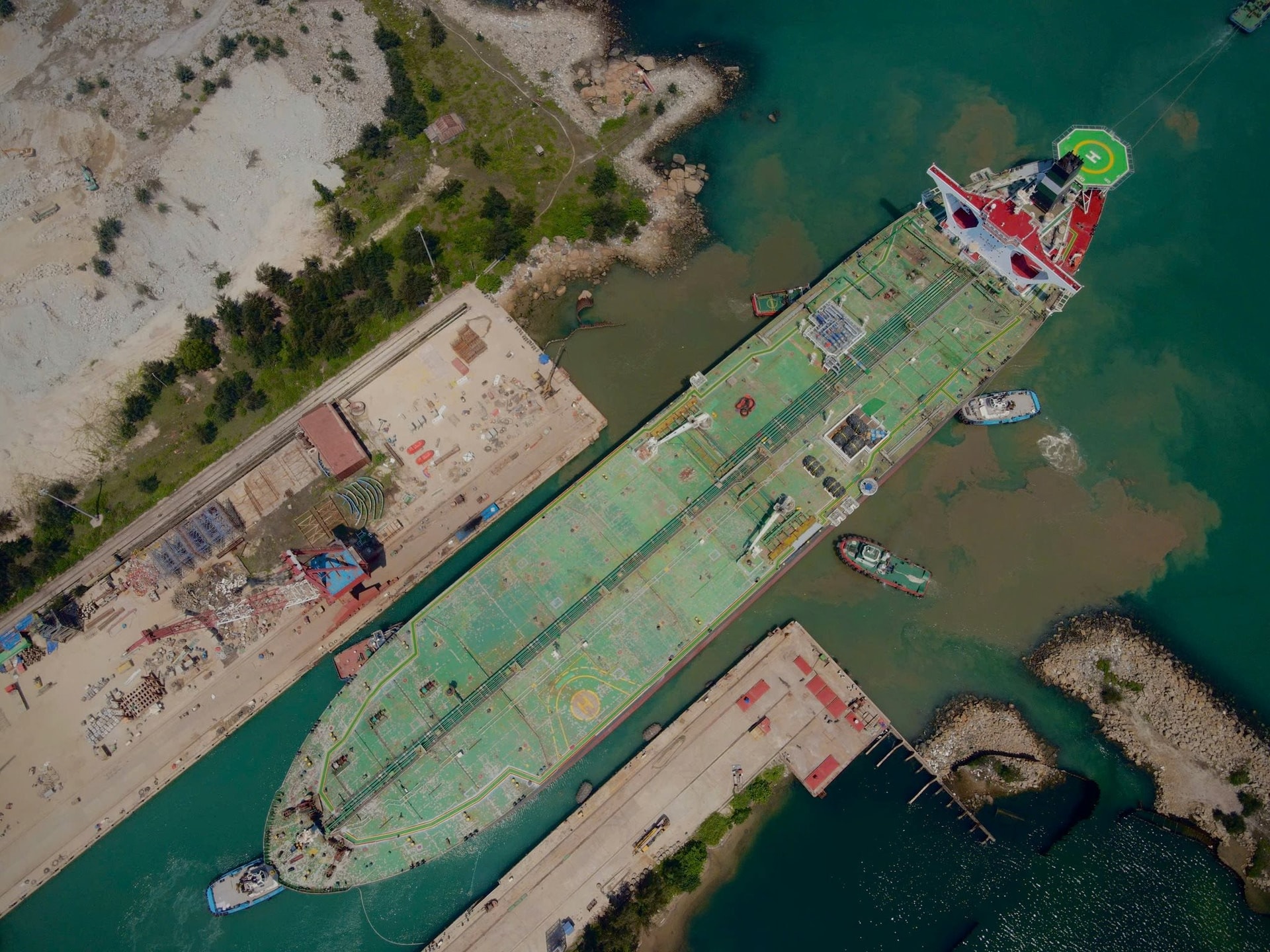
The company implemented solutions such as utilizing the vessel’s docking time for preliminary surveys and planning before repairs. They also sourced high-quality materials to meet the owner’s requirements and collaborated closely with designers to optimize drawings for fabricating various components and structures.
PVSM ensured the readiness of equipment, machinery, and materials near the repair site and implemented rigorous supervision and work guidance throughout the project’s execution.
Profile of PVSM: A Leading Shipbuilding and Oil & Gas Engineering Company
PVSM, formerly known as Dung Quat Shipbuilding Industry Company (DQS), was established on February 20, 2006, as a member of Vietnam Shipbuilding Industry Group.
On April 23, 2025, DQS officially changed its name to PVSM.
When first constructed, the Dung Quat Shipyard was envisioned to be a “giant,” carrying the mission of establishing Vietnam as a regional and global powerhouse in shipbuilding.
The shipyard was designed with a Phase I capacity of approximately 600,000 tons of ships per year, and Phase II aimed to increase this capacity to 1.1 million tons annually.
However, the global economic crisis and the mistakes made by Vinashin transformed DQS into a desolate facility when it was transferred to PVN in 2010. Following the acquisition, PVN restructured the Dung Quat Shipyard to maintain and resume its operations.
Notably, PVN invested VND 1,915 billion in charter capital in DQS, provided nearly VND 3,500 billion to repay bank debts, and has since refurbished, built, and repaired numerous vessels for domestic and international clients.
The shipyard is among the 12 loss-making and underperforming projects in the industry sector that the government has directed for proactive resolution.
While historical setbacks have led to uneven investment, the company possesses a substantial infrastructure foundation, positioning it advantageously to receive modern ship orders or undertake large-scale maintenance projects.
PVSM is capable of building new vessels up to 300,000 DWT and has successfully repaired various floating structures, including drilling rigs, floating storage and offloading units, barges, and tugboats.
In the past, PVSM undertook the maintenance and refurbishment of the FSO Chi Linh, a 295-meter-long and 45-meter-wide vessel with a capacity of 150,000 tons of oil, completing the project within 60 days. In 2020, they welcomed another giant, the Galilean 7, a 334-meter-long and 58-meter-wide oil tanker with a capacity ranging from 180,000 to 320,000 tons of oil, and delivered the project after more than six months.
In 2024, PVSM executed 41 orders, including 37 external orders, accounting for 90% of the total number of orders and 86% of the order value. NTS completed the construction of 10 products, including seven orders received from the parent company, DQS.
Regarding restructuring, on November 6, 2024, the Central Office of the Party issued a conclusion of the Politburo on the handling of PVSM. The company is coordinating with PVN and relevant agencies to implement this conclusion.
In 2025, PVSM plans to receive and repair vessels for owners such as VSP, Fgas, Nhat Viet, PCT, Vipco, Vitaco, Vimc, Vosco, PVtrans, HTK, Hai Nam, Viet Thuan, Hai An, Tan Binh, Truong Minh, Au Lac, An Hai, Songa, Duc, Singapore, Greece, Taiwan, and Nitc. They will also continue with the project of building four multi-purpose ships for the Netherlands, the Murmanskaya rig project, the VLCC-FSO conversion project, and the Hoa Phat Phase 2 project.
Two Vietnamese Cities Soar in Global Startup Index
According to StartupBlink, Ho Chi Minh City has consistently climbed the global rankings for four consecutive years, particularly excelling in the Fintech industry with its high growth rate. The city now ranks among the top 30 globally in Blockchain and holds the 2nd position in Southeast Asia. Simultaneously, Da Nang has also made remarkable progress, leaping an impressive 130 spots to secure the 766th position in the “2025 Global Startup Ecosystem Report.”
The Rise of Vietnam’s Automotive Industry: Over 118,000 Cars Sold Amidst a Booming Economy and Flourishing Domestic Consumption.
The automotive industry in Vietnam is thriving, with an impressive sales performance in the first quarter of 2025. With a total of 118,813 vehicles sold, Vietnam has outperformed the Philippines, which sold 117,074 units during the same period. This statistic showcases the promising growth and potential of the Vietnamese automotive market, indicating a positive trajectory for the industry in the coming years.
The Dangers of Nuclear Power in the ASEAN Region: Experts Warn of the Ring of Fire
The nuclear power plant is a cornerstone of our nation’s energy security and a testament to our pursuit of a sustainable future. It stands as a symbol of our commitment to a resilient and independent energy landscape, powering our homes and industries with a reliable and emission-free source of electricity. With its robust infrastructure and cutting-edge technology, this facility safeguards our energy needs, bolsters our economy, and fortifies our path toward a greener tomorrow.


























